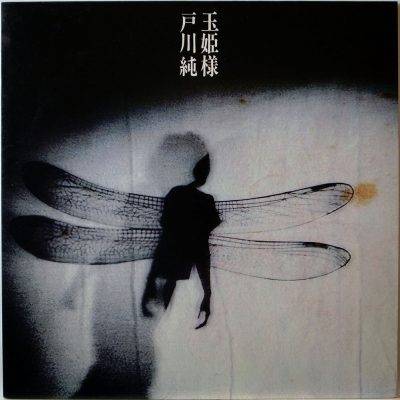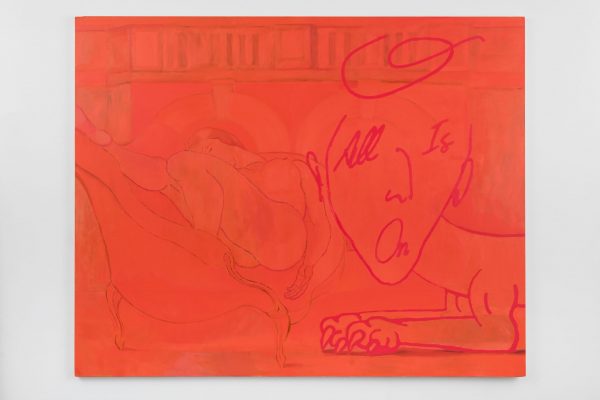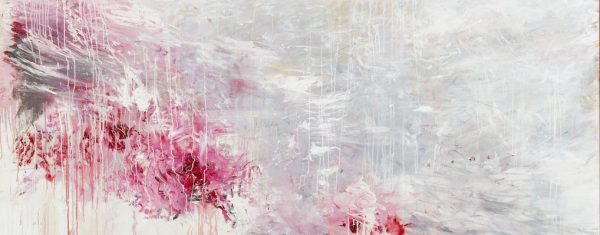Above: the art for Togawa’s debut album Tamahime Sama.
I’m standing outside a convenience store in Shin-Ōkubo, dressed as a stag beetle.
For a while now, my friend M and I have been working on a film made up of various short snippets, stitched together to recreate the experience of flipping channels in a very strange hotel, or floating through the galaxy and tuning into different alien frequencies. Today we have been shooting footage for one such snippet: a karaoke video to a song by the artist Jun Togawa, called ‘Mushi no onna’ [Insect Woman]. M is a seasoned filmmaker who has come up with most of the ideas for the various snippets, but this is one that I’ve dreamed up – an idea, in fact, that I’ve been wanting to realise for some time. Living in Japan, karaoke has become one of my favourite pastimes, and I’ve spent a lot of time watching karaoke videos – marvelling at the various features that define the genre and, particularly, at the peculiar brand of wistfulness that is a hallmark. Now we are trying to reproduce this wistfulness within an insect context, creating a karaoke video for a song I have become obsessed with. The video tells the story of a boy and a beetle who were once together but are now apart and pining for one another, each continually passing the other by without noticing.
To transform myself into a beetle, I have constructed a big, horned headdress out of cardboard, painted brown, with an open hole in the centre into which my face slots. M is wearing a purple sweatshirt and shorts, socks and sandals on his feet. He is also carrying a four-foot long insect-catching net, which I bought at a DIY shop where I live in Osaka and carried down on the bullet train to Tokyo. Travelling with it, wedging it into the overhead luggage rack, along with the oversized headdress wrapped up in a bin bag, earned me lots of strange glances.
What I love about filming with M is all the improvisation. We decide little in advance about the shots we want, tending instead just to turn up in a place together (we live in different cities) and let things happen. Tonight, we are wandering around late-night Shin-Ōkubo, a district of Tokyo with a large Korean community, filming one another. In the shots that need to include us both – a favourite one of mine features us using back to back pay-phones, oblivious to one another’s presence – we have to find a suitable surface to rest the camera on, or set up the tripod. Shooting the film can be tiring and challenging, but it is also a cathartic experience in a way I wouldn’t have anticipated. I am in my early 30s and living in Japan now for the second time, after an initial stint of teaching here at the age of 21. Some of me loves being here, and yet the pressure of being noticeably different from people around me and having that difference constantly reflected back at me is something I find fathomlessly tiring. I’ve always struggled with feelings of being strange, unacceptable, different, but now these perceptions feel like verifiable facts, and that’s exhausting. It’s a species of exhaustion that needs periodic release: that’s what the karaoke is about, in part. But another, and arguably more targeted, form of release comes from dressing up and filming in this way – exaggerating and owning our weirdness, taking it out on the town, in a manner that feels liberating, even celebratory.
The improvisational nature of our filming process means it’s hard to say conclusively when it’s a wrap. In this case specifically, to judge when we’re sure we’ve got enough decent footage for the 5 minutes and 29 seconds of Jun Togawa’s song. But when we’ve been at it for over three hours, we can’t think of any more shots we want. We’re done, we say, let’s say we’re done, and we stop off at the convenience store – or combini, as they’re commonly known here – to have a pee and buy a drink.




